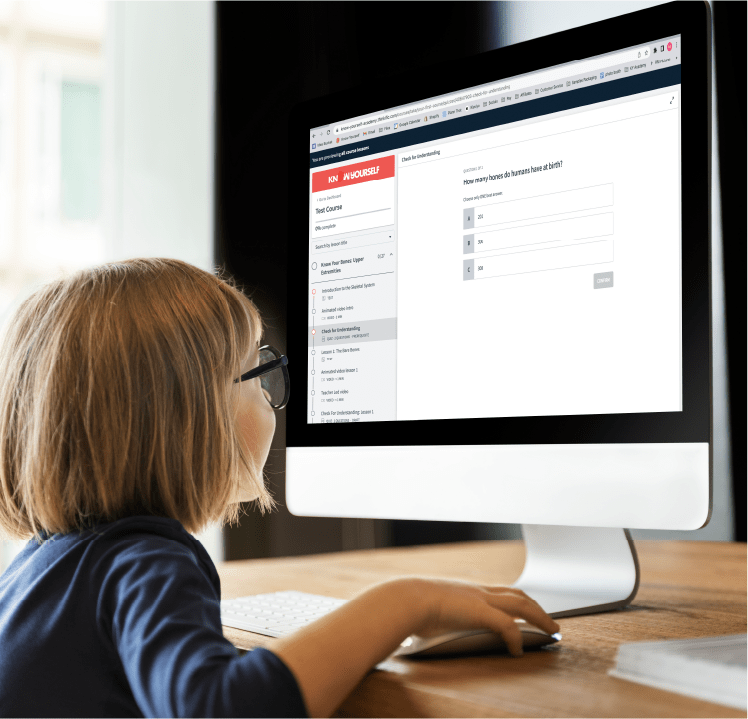
Last week we learned about how we’re affected by our own thoughts and feelings. Now, we’re going to look into how we’re affected by whatothers are thinking and feeling (or what we assume they’re feeling). This science, calledsocial psychology, is the study of how our interactions with other people change the way we act and think. People have been writing about social psychology as far back as the ancient Greeks (and likely even further), but it was William McDougall who published An Introduction to Social Psychology in 1908, the first notable work on the subject written in English.Since then, psychologists have been studying and naming various ways the speech, actions, and presence of other people affect our own - in obvious and in not-so-obvious ways.
Nature commands many powerful forces that hold incredible influence over our lives. It can create thunderstorms that blow out electrical lines and water our crops or send torrential winds that topple street signs and power the windmills. Yet there’s a less visible, more subtle force that affects our day-to-day interactions, the way we perceive ourselves and even how we perceive the world. That force is the force of other people -- the presence of others can create peer pressure, embarrassment, or even lead us to false conclusions. Since humans tend to thrive with a healthy amount of social interaction, it’s important that we know how we’re influenced by our friends and neighbors so we can be aware of and counteract some of those negative effects. Building this self-awareness is the launchpad to fully and completely knowing ourselves! We’ll start by looking into some common social psychological effects we experience on a regular basis.
The Spotlight Effect
Have you ever had a bad haircut or spilled juice on yourself and then had to go out and see people? Or maybe you’ve walked into a movie theater three minutes into the film -- perish the thought! If so, you might have felt like that’s all anyone could look at. Well, good news -- hardly anyone noticed, and even fewer people cared. You just thought they did, and that’s what’s called thespotlight effect.
The spotlight effect is the tendency to think that people are giving more attention to something (usually bad) about you than they actually are. In one study, researchers took a bunch of psychology students and sent them to their first class wearing bright yellow Barry Manilow t-shirts (if you don’t know who he is, don’t worry -- he’s a musician; all you have to know is that the subjects found the shirts a little dorky).
After the class, researchers asked the students to estimate how many others noticed their big, goofy tees. Each student thought tons of people noticed and remembered. Follow up interviews with other students in the group showed that they were wrong -- less than 50% of the class even recalled the shirt. This common experience is the result of egocentrism (Say it like this: ee-go-CEN-trih-zm) -- not that we’re full of ourselves, just that we use our own experience to guess what experience other people are having. However, people aren’t usually thinking about your shirt -- or at least not as much as you think they are! They’re over there worrying about their own shirt, and what you think about it. The spotlight effect is best counteracted by remembering the famous quote, “You’ll worry less what other people think of you when you realize how seldom they actually do.”*
*Often attributed to the great Eleanor Roosevelt, but the jury is still out.
The Cocktail Party Effect
Everybody has been in a crowded room with lots of chatter, and we know that if we stop to take it all in, it just sounds like white noise. Weirdly though, when the person next to us says our name, we can pick it out from the chaos and focus on the words of our neighbor, suddenly able to drown out everything going on around us. This ability to dial into the conversation amidst a bunch of noise is called thecocktail party effect.
The cocktail party effect allows us to tune out distractions and hear what we think is important - things about ourselves! This was first defined by the researcher Colin Cherry in 1953 in a series of experiments on auditory attention. Cherry found that when he played two different messages on either side of a headset, subjects were able to understand either one at a time, but always recognized their name even if it was coming from the message they chose to ignore.
For a long time, it was difficult to determine how our brains did this, butrecent studies using neural recordings (that basically means scanning someone’s brain with a machine and seeing which parts light up -- to learn more, check out Adventure 11) found that the neurons in our brain are in a constant process of adjustment. They change to recognize and emphasize language or anything from which we can derive meaning. And it’s a good thing too, or else no two conversations could ever happen in the same room -- we’d all have to disappear to broom closets and basements just to ask, “How are you?”
The Bystander Effect
If you were hurt or stuck, and needed someone’s assistance, where would you prefer it to happen? In a place where plenty of people were out and about, or somewhere only a few folks passed through? At first, you might think the former -- logically, if there are more people, someone’s more likely to help -- but countless studies have shown that this is actually the opposite of the truth! The more people there are, the less likely it is that someone will step in. This is called thebystander effect.
The bystander effect was brought into mainstream discussion in 1964 byBibb Latané and John Darley after a series of crimes occurred in populated places and no one intervened. This wasn’t because they were callous or lazy people. Further studies on the bystander effect show that, in an emergency situation, our brain takes us through a series of questions on how we should act or if we should act at all, and the presence of others will lead us toward inaction. Here’s how the process goes.
First, you must recognize that something is wrong. If there’s a car crash, then it’s pretty clear something is wrong, but if you just see two people shouting at each other in the mall, you might not even notice, especially if crowds of people are casually walking by. Then, you must decide if the situation is an emergency that requires assistance -- if no one else is doing anything, you could easily take that as an indication that this isn’t an emergency or, if it is, someone else will help out soon. That’s calledsocial influence, or looking to other people to decide how you should behave. If you do figure the situation to be an emergency, you then ask yourself, “Is it my responsibility to act?” With a multitude of presumably capable people all around you, it’s easy to assume this isn’t your fight -- this is calleddiffusion of responsibility.Even if you do decide intervention is your responsibility, the question becomes, “How should I act?” Not everyone is trained in every emergency situation, so knowing how to act could leave the few people who make it to this step pretty helpless. Finally, you must actually step up and take action, which requires a fair amount of courage. Suddenly, it’s not hard to believe no one would help -- it’s a wonder anyone ever helps at all!
The best way to counteract the bystander effect, like the spotlight effect, is to remember that it exists at all! If you do see a situation and think something might be wrong, simply acknowledging the issue could be incredibly helpful, even if you have no idea what to do. There might be a team of trained experts standing by who are still at step one or two of the bystander effect -- they just need you to let them know that they can and should do something.
The False Consensus Effect
Imagine you’ve just seen a movie that really floored you, or an amazing season finale to your favorite show. You immediately call up friends who have also seen it to geek out. But once you get them on the phone, your friends say it was just okay, or they didn’t like it at all. How do you react? Do you say, “Yeah, I figured you were pretty ‘meh’ about it?” No, you’re surprised or even shocked to hear that they didn’t love it as much as you. After all, the movie was awesome! This inclination to believe that many other people share your opinion is called the false consensus effect.
The false consensus effect was named by psychologist Lee Ross in 1977 (the same year as the release of Star Wars -- you know, that movie whose fans all think everyone else loves it as much as they do?). Ross rounded up a bunch of students and asked them to walk around their college campus wearing a sign with a vague and unclear message on it. Some students found this request odd and refused, while others gladly agreed. Interestingly, when questioning the students further, he found that the students who refused to comply believed a majority of the other students would also refuse, while the students who agreed believed most of the others would agree too. Each group believed more than half of the other students would feel the same way as them. They couldn’t both be right, meaning one group was experiencing the false consensus effect.
The likely culprit behind the false consensus effect is called theavailability heuristic(Say it like this: her-RIS-tick). The availability heuristic causes us to look to examples that come to mind most readily (most ‘available’) when estimating how likely something is. Our own thoughts and opinions are on the forefront of our mind, so when determining what other people think, we’ll tend to pick our own thoughts because they’re the most...available. Also, given that we are influenced by the beliefs and preferences of our family and friends (and tend to pick like-minded individuals as friends in the first place), the people we spend the most time with are more likely to share our opinions and reinforce the belief that many other people are thinking the same way! On top of all that, there’s a little ego in the game - believing other people think and act like us can boost our self-esteem (if everyone else is on the same page as you, you must be doing something right), so using the availability heuristic - accurate or not - can feel pretty good.









Leave a comment (all fields required)